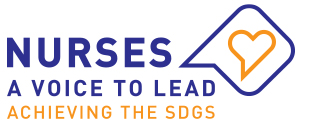Nursing Shortage Research, Southern and Eastern African and Eastern Mediterranean regions
Worldwide, nurses and midwives comprise the largest proportion of health care professionals and are the backbone of health care systems. To address the large global health disparities, the development of a robust nursing and midwifery profession needs to be a critical goal in countries and regions with minimal human resources for health and huge disease burden. Building a solid evidence base for nurses and midwives requires a robust research program, but with a global nursing shortage and dearth of clinically focused nursing and midwifery research, such objectives require a united, global endeavour.
To improve global health and primary care delivery, it is vital to understand current nursing and midwifery care needs and practices, and outcomes of nursing care provided. This requires research expertise to collect and critically analyze data and identify priorities and gaps. A robust nursing and midwifery clinical research agenda is needed to build a solid evidence base for our practice. This is central to population health outcomes and a foundation to move towards equitable care and universal health coverage. Regions that face great health care inequities and minimal human resources for health are challenged to accomplish.
In a three year initiative, nurses from the Office of Global Initiatives and PAHO/WHO Collaborating Center for Advanced Practice Nursing, the Columbia University School of Nursing, and the Columbia Global Centers in Nairobi, Kenya established a cross-regional core convening group of nurse and midwifery leaders and researchers in the Southern and Eastern African and Eastern Mediterranean regions to build a network of nurses and midwives with expertise in clinical research.
The goal was to build a model to expand nurse and midwifery clinical research that, through sharing of resources, brainstorming, peer-mentoring and collaboration with clinicians, could be replicated in regions around the world. In each region, they determined regional gaps in the evidence and identified research priorities. They then invited participants to attend a regional Research Summit to foster networks, build mentoring partnerships and formulate long-term plans to increase clinical research.
Both Research Summits (one in 2015 in Nairobi, Kenya; the second in Amman, Jordan in 2016) yielded focused, directed action plans based on consensus of priorities for nursing and midwifery research, working groups to develop mentorship models, and nascent research networks. This programme demonstrated the potential for increasing nurse and midwifery engagement in clinical research by increasing research capacity through shared knowledge and resources with the goal of improving health outcomes.

